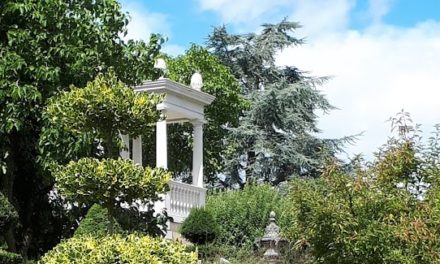Wild Gardening at Nant-y-Bedd Garden
Sue Mabberley gardens at Nant-y-Bedd. A blend of the wild and the tame, the ten-acre garden has been created over 44 years to sit effortlessly within its landscape of mature forest at 1200 feet in the Black Mountains, and is where Sue continues to explore sustainable management ideas.
 Sue and Ian have opened the garden to the public over a number of years, firstly for the NGS and now as a Garden Organic and RHS Partner Garden. Nant-y-bedd was voted the visitors’ favourite RHS Partner Garden in 2022.
Sue and Ian have opened the garden to the public over a number of years, firstly for the NGS and now as a Garden Organic and RHS Partner Garden. Nant-y-bedd was voted the visitors’ favourite RHS Partner Garden in 2022.
Sue talked us through a virtual tour of the garden, illustrating how the wild is not just ‘allowed’ at Nant-y-bedd, but positively encouraged. Wildflowers are allowed to self-seed in the vegetable beds and ground elder is welcomed along the stream and the flower beds. Plants are chosen with wildlife benefit in mind. This means not just flowers for the bees and butterflies, but also ivy on the walls of the house for sources of insect food and nesting habitat for birds, standing seedheads for the birds over-winter, and nooks and crannies, such as drystone walls to encourage lizards.
The tour went through the Potager, where heritage varieties of vegetables are grown alongside sweet cicely (edible), greater willowherb (food plant of the elephant hawk moth caterpillar), red campion and ox-eye daisies and marjoram (great bee plant). Instead of battling with slugs when growing lettuce, Sue eats her weeds such as hairy bittercress, young ground elder, hop shoots and sweet cicely. Peas and beans are supported with material such as hazel grown on site. Mixing flowers with vegetables encourages pollination and it is pretty to look at. Sue also grows some perennial vegetables such as Taunton Dean kale, which is less attractive to slugs.
The path then leads across the rope suspension bridge to the natural swimming pond, and down towards the adult treehouse and meadow and woodland pasture, where sensitive management encourages wildflowers such as orchids, ragged robin and ladys’ smock. Next we were guided along the river Grwyne Fawr (an SSSI and SAC), where dippers nest alongside the waterfall and back through the forest.
The tour was completed with a spin around the Cottage Garden, featuring a fern tree sculpture, and the Edible Forest Garden, home to some unusual edibles, such as Sichuan peppercorn, Honeyberry, three-cornered leek, as well as traditional fruits and nut trees.
The garden is open (pre-booking only) on Wednesdays to Saturdays, from the 29th of May through to the end of September. 11am to 5pm. Picnics welcome.








